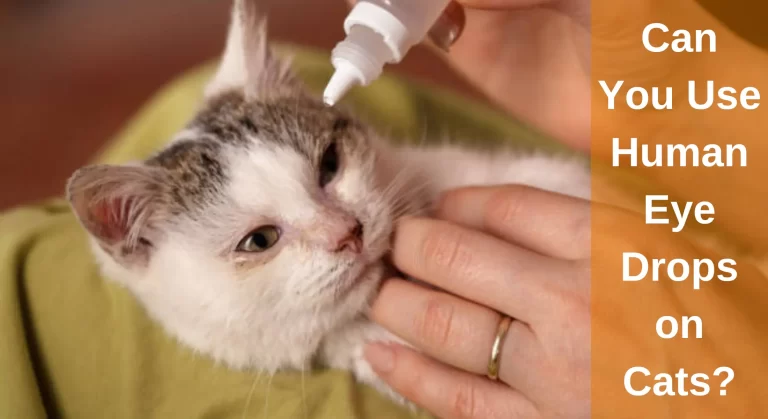Should I Quarantine My Cat With Tapeworms: All You Need To Know
Tapeworms are a common parasite in cats, especially those that spend time outdoors or hunt rodents. If tapeworms have been found in your cat’s body system, you must administer deworming medication to fight the infection. But given the prevalence of tapeworms, one of the most frequent queries from pet owners is should I quarantine my cat with tapeworms?
A cat’s quarantine is necessary to spread an infection from one animal to another. If you only have one cat, the deworming therapy should be effective after a few days of isolation. Your feline buddy should be kept in isolation if there are other pets.
In this article, we’ll explore what tapeworms are, how cats get them, whether it’s necessary to quarantine them if they’re infected and the importance of a quarantine period.
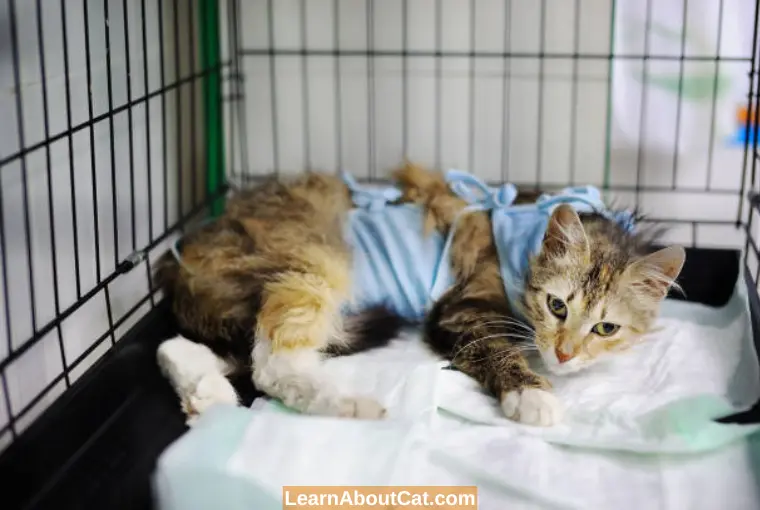
What are Tapeworms in cats?
Tapeworms are flat, ribbon-like worms that can infect cats. They are segmented and can reach up to several inches in length. Tapeworms typically attach themselves to the intestinal lining of cats, where they feed and reproduce.
Causes of Tapeworms in Cats
There are several types of tapeworms that can infect cats, including Dipylidium caninum and Taenia taeniaeformis. These parasites can be found in the environment, including soil, water, and faeces.
Cats that hunt rodents or other small animals are at a higher risk of contracting tapeworms, as are those that live in multi-cat households or in areas with a high flea population.
How Can Cats Get Tapeworms?
In the larval stage of the flea, the flea larva must first eat the tapeworm egg. Inside the flea larva, the tapeworm egg develops and keeps growing while the flea larva grows into an adult flea.

The cat unwittingly ingests the flea while grooming itself or responding to a flea bite. While the flea is being broken down inside the cat’s digestive tract, the tapeworm egg is released, hatches, and then attaches to the intestinal lining, ending the tapeworm lifecycle.
Contrary to other intestinal parasites, cats cannot get tapeworm infection by ingesting tapeworm eggs. Tapeworms must pass via the flea before they may infect the cat (the intermediate host).
Check Out: Why My Cat Has Scabs on Its Neck But No Fleas?
How Do Tapeworms Work?
Tapeworms may infect pets in a variety of ways, but Dipylidium caninum is the one that is most frequently seen in cats.
The segments are roughly 1/2″ (12 mm) long and 1/8″ (3 mm) broad and resemble rice grains or cucumber seeds. They sometimes move on the anus hairs or, more frequently, on the surface of the just-released faeces.
The proglottid turns golden as it dries up and ultimately bursts out, dispersing the fertilised eggs throughout the surrounding area. There are around 20 tapeworm eggs per proglottid.
Why Do I Need To Put My Tapeworm-Infected Cat in Quarantine?
As other cats may get infected, cats must be quarantined. This is crucial for the following reasons:

1. Reduces Threat to Other Animals
Due to how contagious tapeworms are, any other animals in your home, including cats and dogs, are more likely to get the infection. This may make completely getting rid of the parasite in your home impossible.
The most effective way to prevent the transmission of tapeworms to as many of your pets as possible is to isolate your sick cat.
2. Shrinks the Size of the Impacted Area
You can isolate your cat to keep all tapeworm pieces and eggs in one location. This facilitates ensuring you thoroughly clean any area where your sick cat has gone while also helping to prevent the virus from spreading.
3. Preventing Human Infectioninfection with the Disease
Some tapeworms are transferable to humans. Therefore, it is advantageous for you and your family to keep your cat alone. Despite the extremely low likelihood that this may occur, try not to freak out.
Humans may get tapeworms by ingesting an infected flea, just like cats. To be safe, it is nevertheless advisable to proceed with caution.
Also Read: My Cat Has Worms How Do I Clean My House?
How Can I Isolate My Cat With Tapeworms?
You now understand that you must keep your sick cat apart, but how do you accomplish this?
I suggest keeping your cat confined to a single, small space. This makes it possible for you to exercise extra caution while handling or cleaning an area where there is a chance that you or other animals might contract worms.
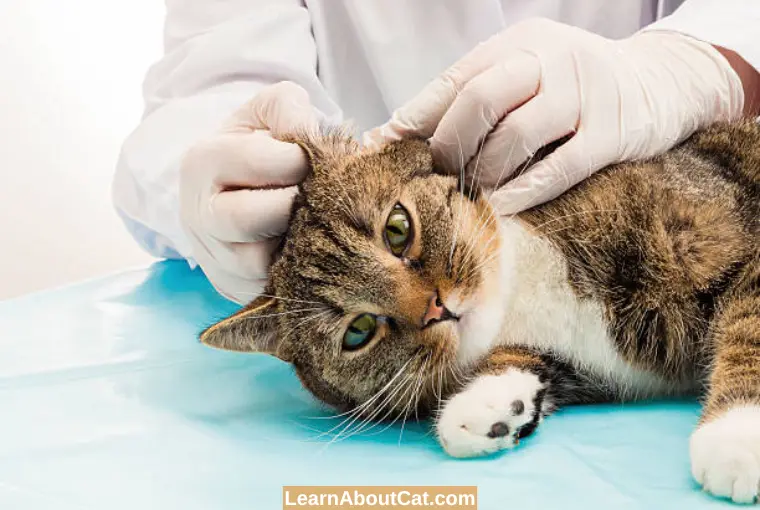
All your cat’s essentials must be kept in the space where they are kept. This includes tidy food and water bowls, litter boxes, and many toys to keep them active while they are cooped up. If they fill it with their bed, cat tree, and scratching post, they will feel more at home during their period of isolation.
Keeping your cat’s enclosure tidy while it’s in quarantine is essential. As tapeworm eggs are excreted in their faeces, ensure you properly clean their litter box each day while in isolation.
Proglottids may transfer from the litter pan to other room regions because they sometimes adhere to the fur surrounding your cat’s anus. You must thus also clean the other surfaces in the room.
The possibility of humans contracting worms exists, although the chance is relatively low. Additionally, 3–4 weeks following the initial dosage of dewormer medicine, a second treatment may be necessary for severe tapeworm infections.
If this is the case, your pet won’t need to be kept in isolation for the whole three to four weeks. It’s advisable to keep your cat inside and, if possible, away from other animals until that time.
Deworming medication only works to eliminate the worms in your cat’s body; it has no preventative implications.
Consequently, a cat that has had worm therapy is vulnerable to Infectioninfection once more. Although possible, the new tapeworms might develop in as little as three months.
What are the Signs of Cat Tapeworms?
It may be difficult to tell whether a cat is ill because many cats with tapeworms won’t show any symptoms. Compared to kittens or elderly cats with compromised immune systems, healthy cats frequently exhibit fewer symptoms.
There are a few warning signs you should be aware of, such as:
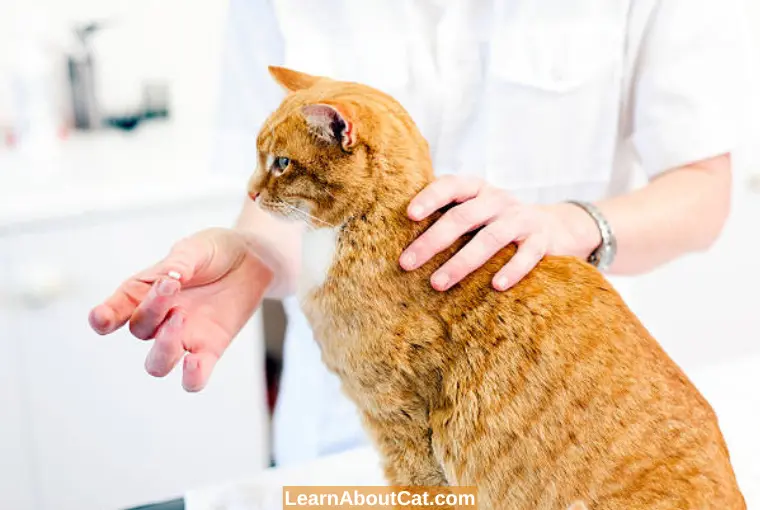
- Irritation around the anus or base of the tail
- Visible segments of the tapeworm in the cat’s faeces
- Unexpected hunger
- Weakness and sluggishness
- Intestinal blockages,
- Issues with both humans and animals and intolerance
- Shaggy coat
Not all cats will display all the symptoms mentioned above, and there is a significant degree of variety from instance to case.
What Medical Symptoms Indicate a Tapeworm Infection in Cats?
There aren’t many clinical signs of tapeworms, and cats don’t appear to be at significant risk from them. In rare cases, having a lot of tapeworms may cause you to become weak or lose weight.
Due to the anal irritation produced by the proglottids, cats will occasionally scoot or drag their anus around the carpet or floor.

On rare occasions, a tapeworm will escape from the intestines and go to the stomach. Cats should undergo yearly exams with the vet since it’s possible for them to have tapeworms without ever exhibiting any symptoms.
The following are signs that a cat has tapeworms:
- Dragging their backs over the floor while licking, biting, or scratching their genitalia
- Weight loss despite a constant or heightened hunger
- Mediocre coat particles, such as rice, in or near their anus or tail, as well as frequent vomiting and diarrhoea
How to Diagnose Tapeworms in Cats?
Most typically, proglottids are discovered on cat waste or in cat vomit, at which point a cat owner realises their cat has tapeworms and calls the veterinarian.
As the tapeworm separates and enters the stool, pieces of it may be seen crawling on the surface of the cat’s faeces. Proglottid segments resemble cucumber seeds or cooked white rice grains. Sometimes, details can be seen near the cat’s anus.
It’s important to understand that routine stool examination cannot reliably identify tapeworms. Therefore, you should contact your veterinarian if you find tapeworm particles in your cat’s faeces.
Check Out: Why Do Cats Scratch The Sides Of The Litter Box?
What Drugs Are Used to Cure Tapeworms?
For the best advice on deworming preparation suitable for your cat, speak with your veterinarian. A licensed veterinarian can only prescribe the most effective worming drugs.
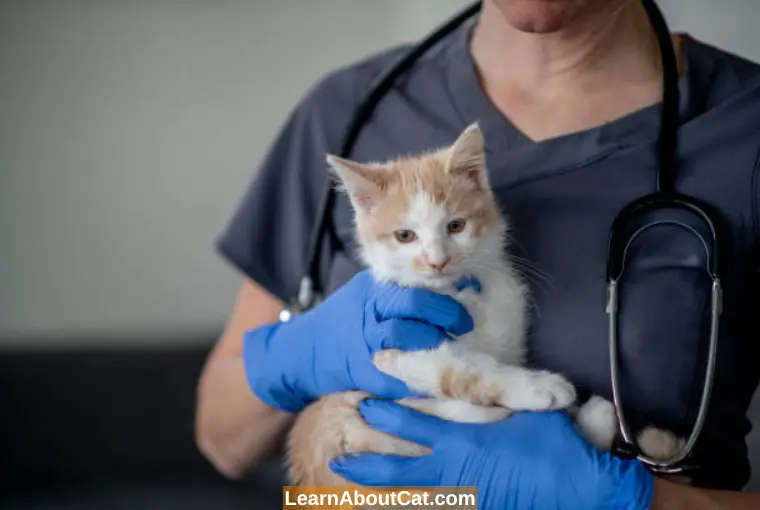
The tapeworm often digests inside the colon after treatment and dies. Thus worm pieces don’t frequently end up in the faeces.
An anthelmintic, often known as a deworming medication, can be administered as a tablet or an injection. Following treatment, the tapeworm frequently dies and is digested inside the colon, preventing worm pieces from entering the faeces.
Also, Check Out: How Long After Deworming A Cat Are The Worms Gone?
Risks of Not Treating Tapeworms in Cats
If left untreated, tapeworms can cause ongoing health problems for your cat, such as malnutrition or blockages in the digestive tract.
In addition, tapeworms can be transmitted to humans through accidental ingestion of tapeworm eggs, especially in young children or those with weakened immune systems. This can lead to serious health problems, such as cysticercosis.
Cat Tapeworm Treatment at Home
Cat tapeworms cannot be treated naturally. If you suspect your cat has tapeworms or if they are exhibiting any of the symptoms listed above, take them to the vet straight away to be examined and diagnosed.

If a tapeworm is present, your veterinarian will prescribe deworming medication. The medication kills and destroys the worm expelled in your cat’s faeces (though it usually won’t be evident).
To verify the Infectioninfection has been treated, make sure you take the specified medication course.
You should meticulously clean your carpets, pillowcases, blankets, and any human bedding your cat uses while also checking for fleas and treating any possible additional pets in the area because fleas commonly cause tapeworm in cats.
Preventing tapeworm infections is the most incredible line of defence. A key aspect of pet ownership is regularly providing your pet with prophylactic treatments for ticks and fleas and regular deworming. Consult your veterinarian about the best course for your cat and other animals you own.
How Does a Dewormer Work?
As previously stated, a cat with tapeworms must be quarantined until the dewormer treatment starts to act. This depends upon the particular drug being administered per your veterinarian’s recommendations and how it functions.
Antiparasitic drugs, known as dewormers, aid in removing the tapeworm from the gut. The worm and its eggs subsequently pass through the faeces and leave the body.
Within 24 hours after taking the medication, most worm treatments kill and eliminate adult worms. But some do take a little longer, so always talk to your vet.
How Do Wormers Affect Cats?
Wormers eliminate worm eggs or larvae with their faeces, acting as antiparasitic agents. Wormers do not prevent reinfection, unlike vaccinations, which only serve to eliminate live worms.
Most adult worms will die within 24 hours after taking a medicine. In certain scarce situations, a second dosage administered three to four weeks later is required to get rid of any remaining larvae that were present at the time of therapy.
After taking deworming therapy, a cat is often at a high risk of contracting worms once more. The internal worms in cats take around three months to grow and multiply to the point where the cat’s health is at risk.
The Ideal Dewormer for the Tapeworm in Your Cat
To get rid of those pesky parasites, picking the right dewormer (anthelmintics) is essential. A licensed veterinarian will be better able to advise you on this topic. Thus we strongly encourage you to do so.

It’s important to carefully read the directions and information on the bottle if you decide to use an over-the-counter tapeworm dewormer. This is because some parasites are resistant to deworming medications, making it crucial to pick the right one.
Cat owners should know that not all anthelmintic classes are equally effective against all parasites. There is no cure for all feline parasite problems.
Some programmes are specifically made to fight tapeworms, while others work particularly effectively against roundworms.
Giving your pets the wrong anthelmintics might do more damage than good. As a result, if your cat displays symptoms of a parasitic infection, we highly advise against trying to cure it yourself.
The optimum deworming method depends on a wide range of factors, including age, breed, gender, and stage of pregnancy.
How Can I Reduce the Chance of Cat Worm Reinfection?
After your cat and house have been free of tapeworms, you’ll want to reduce the likelihood of reinfection. Additionally, preventing feline worms is far easier than treating them.
There are specific ways to help you to reduce the chance of cat worm reinfection, which are as follows:

1. Always keep Things Tidy
Always keep all the things and household items neat. You could eradicate any worms and their eggs that are present on surfaces and waiting to infect your pets once again.
A clean home will also help, even if the litter box and their food and water dishes require extra attention.
2. Keep the Cat Indoors
Cats will be less frequently exposed to tapeworms and infected animals if their owners keep them indoors. Additionally, mice may act as intermediate hosts, so if you keep your cat inside, it won’t be
3. Medication to Prevent Fleas
Cats frequently get tapeworms from fleas, the intermediate host. As a result, if your cat never gets fleas, it will have a significantly decreased chance of getting tapeworms. Provide flea-preventative medication all year long to keep fleas at bay.
You can use a flea collar or oral medication. If unsure, consult your veterinarian and learn about your options.
4. Regular veterinarian Check-Ups
You must bring your cat in for periodic exams to ensure its wellness. At your next consultation, request that your veterinarian include faeces analysis as a routine part of their examination. This can assist in the early diagnosis of tapeworm infections and aid in issue prevention.
What are Other Types of Worms to Infect Cats?
There are several ways to get tapeworms, hookworms, roundworms, bladder worms, lungworms etc.
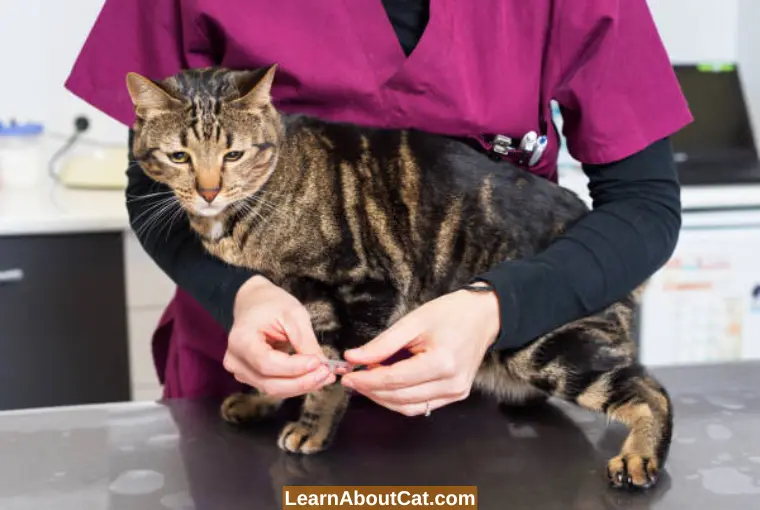
1. Whipworms
These worms are whip-shaped and, as their name suggests, may grow to be 45 to 75 millimetres long. Whipworm illness can be contracted by eating, drinking, or handling animals exposed to whipworm eggs or larvae.
It takes the eggs around three months to feed on the nutrients your cat consumes after they hatch, resulting in weight loss and gastrointestinal discomfort.
2. Roundworms
Your feline buddy may get these parasitic worms by ingesting their larvae from sick or infected mice.
Cats who look for food outside run a higher risk of developing hookworms. Roundworms are commonly discovered in the mother’s milk of kittens.
3. Hookworms
In soil, hookworms can be discovered. If your cat spends time outside, hookworms might be caught by brushing his feet after he’s been affected. The faeces of other infected dogs and cats can also transmit hookworms to them.
Cats may be meticulous groomers of both themselves and other animals. They may mistakenly remove faeces from other animals contaminated with roundworms or even groom their paws after going potty.
4. Heartworms
These parasitic worms live in infected cats’ blood vessels and are often transferred by intermediary hosts, such as mosquitoes.
There are no specific signs to look for, although ill cats may cough and experience respiratory issues. Heartworms can cause seizures, abrupt collapse, and even death.
5. Lungworms
Lungworms are respiratory residents of felines. Eggs laid by lungworms hatch into larvae that dig into the lung tissue. Infestations can make breathing difficult and lead to pneumonia in the worst cases.
6. Bladder Worms
These parasitic worms are found in the bladder and urinary systems of cats. Infestations can cause symptoms like incontinence or difficult or painful peeing, which are signs of urinary tract infections.
Frequently Asked Questions
Is it okay to touch my cat if it has tapeworms?
Yes, you can touch your cat; however, tapeworms can infect humans, but there is very little risk of infection.
Is it possible to get tapeworms from kissing a cat?
Yes, it’s possible if you kiss your cat on the head or fur can infect you with worms.
Is it safe to sleep with my tapeworm-infected cat?
Cats do have the potential to carry worms, so if they sleep in your bed, you may contact them. It’s not a grave risk, but it is one you should be aware of
How long does it take for tapeworms to leave a cat?
Adult worms usually die within 24-48 hours of taking a medicine, but, in some cases, another dosage administered three to four weeks later is required in order to get rid of any larvae left behind.
Final Words!
As tapeworms are among the most prevalent intestinal parasites in cats, there is a very high possibility that they will transmit diseases from one animal to another animal. Since their eggs have been found in the faeces of ill cats, they must be maintained in isolation until the deworming medication eliminates all the eggs and worms from their bodies.
The practice of quarantining your cat has several benefits. It aids in preventing the transmission of worms to people, animals, and other household members.
It also makes it much easier to clean your home and eliminate any parasite leftovers. This is essential to preventing reinfection and eliminating these annoying parasites!
Related Posts:
Who is Isabella?
My name is Isabella, and I am a dedicated and knowledgeable cat enthusiast. With years of experience caring for cats and a deep love for felines, I made a mission to help other cat lovers navigate the challenges of cat ownership.


